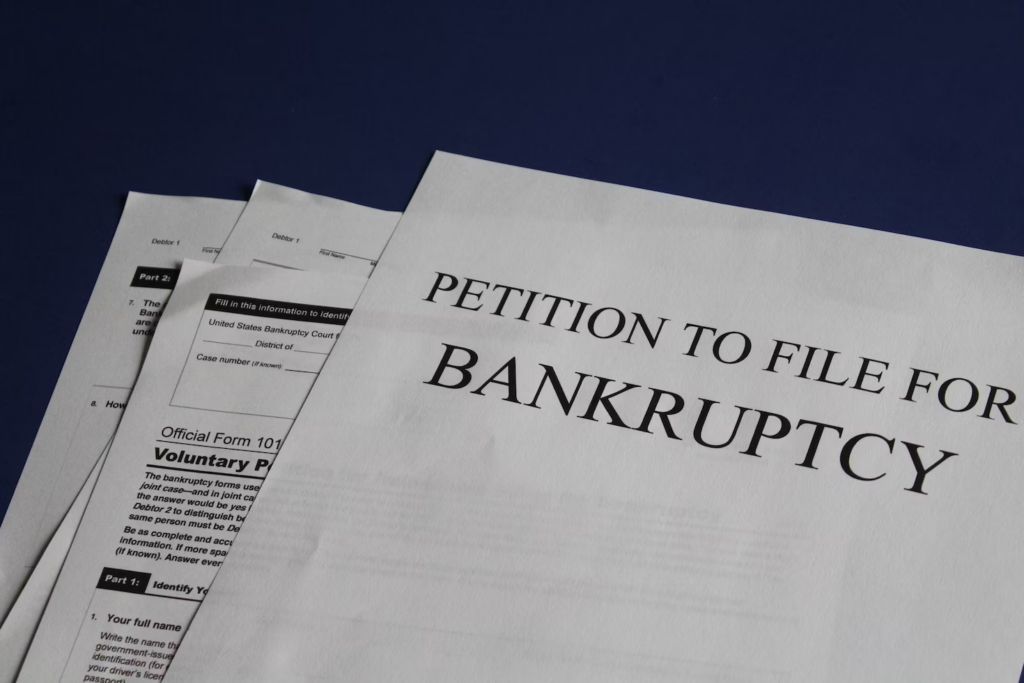An analysis of the current situation tells us that mammoth companies rooted in the field of real estate are finding it hard to make ends meet. First, it was Evergande who fell from grace from being a textbook example of success to a name listed under the ‘Do Not’ section in a handbook. Now it is WeWork who has gone bankrupt and is facing the turbulence of uncertain times.
On 6 November 2023, WeWork filed for bankruptcy, marking the end of a prolonged stretch of troubling times for the startup. The company which was once valued at a colossal amount of $47 billion in 2019, filed for bankruptcy in New Jersey, listing $19 billion in liabilities and $15 billion in assets. The Chapter 11 bankruptcy filing will enable WeWork to continue its operations while negotiating creditor repayment arrangements. However, this will still cause them a lot of grief.
Who is WeWork?
Before its drop, the organisation once held the title of being the most valuable startup in the US. Because of their unbelievably high figures, they attracted a slew of investments from prominent investors, including SoftBank, Benchmark and major Wall Street banks such as JPMorgan Chase. Originated in 2010 by Adam Neumann, his spouse Rebekkah Neumann, and Miguel McKelvey, WeWork aspired to penetrate the office market by leasing large properties and offering flexible, short-term arrangements to smaller businesses. A strategy that clearly worked wonders. Its rise redefined the office sector globally.
The company increased its reach rapidly, expanding its revenue but also incurring significant losses, simultaneously. But this did not waver Neumann’s will, he pushed forward with an aggressive growth strategy which was an eye opener to many about his bizarre behavioural patterns. This display of an unacceptable code of conduct led to his removal and the collapse of WeWork’s planned initial public offering in 2019. And ever since, it has been downhill. As mentioned in Reuters, preceding WeWork’s file for bankruptcy, Neumann stated how he believes that “with the right strategy and team, a reorganisation will enable WeWork to emerge successfully”. Steve Clayton, head of equity funds at Hargreaves Lansdown commented on the company’s rise and fall, sharing food for thought about how ‘charismatic CEOs’ that emerge during market booms should be approached with caution and fear.
The reason for filing the bankruptcy
WeWork filed for bankruptcy in the hope of securing US bankruptcy protection. As stated in the Sydney Morning Herald, in law firm Cadwalader, Wickersham and Taft LLP’s words, “WeWork could use provision of the US bankruptcy code to rid itself of onerous leases”.

As of 30 June 2023, WeWork had a global presence of 777 locations in 39 countries, with occupancy levels akin to those of 2019. However, the company has had to fight tooth and nail to achieve profitability due to the financial burden of its costly leases and a decrease in corporate clients as some employees shifted to remote work. In the second quarter of 2023, the cost of space represented 74% of WeWork’s revenue. The bankruptcy filing primarily pertains to WeWork’s US and Canada locations. This means that offices situated outside the US are not a part of the bankruptcy process. Franchises worldwide remain unaffected, and WeWork has affirmed its commitment to serving members, vendors, partners and other stakeholders as part of its ordinary operations. WeWork in Australia has made it clear that they will engage in their normal business operations. Even though the Australian market has incurred more than its fair share of losses as well.
WeWork’s bankruptcy filing lists estimated assets and liabilities ranging from $10 billion to $50 billion, allowing the company to maintain its operations, while it devises a plan to settle its debts. This move is a reflection of the challenges the company faces as it grapples with its financial situation and attempts to reshape its future.
What caused the drop?
In 2019, the company was valued at $47 billion. By November 2023, its value reads at a mere $45 million with the shares of WeWork’s stock plummeting more than 98% in comparison to the beginning of the year. Numbers that speak volumes. While the office-sharing company did experience a stellar rise to success, it experienced an equally meteoric fall from it as well. WeWork’s story stands as a fitting example that reflects the true nature of the amplified extravagances that are commonly associated with the culture of startups. The company lost its plot when it got enmeshed in a splurging on leasing office spaces, largely financed by taking large debts coupled with an inadequate level of demand from both businesses and independent workers. The situation hit the basement of rock bottom because of the COVID-19 plague, which compelled many office employees globally to transition to remote work, exacerbating the challenges.
This is how WeWork was dismantled in chronological order, right after the hit it took in 2019, In February 2020, Sandeep Mathrani, a real estate executive, took on the role of CEO. Against all odds and with the numbers who were working remotely doubling, Mathrani successfully guided WeWork through a merger with a special-purpose acquisition company in October 2021. Subsequently, WeWork initiated the process of shutting down locations and renegotiating lease agreements with landlords, ultimately leading to the bankruptcy filing on 6 November. SoftBank played a role in WeWork’s financial restructuring by converting $1.5 billion in debt, including $1 billion held by SoftBank, into equity in March 2023.
Things started falling apart once again when Mathrani resigned in May 2023, reportedly due to frustrations with SoftBank. In mid-August, WeWork announced a 1-for-40 stock split to meet NYSE listing requirements while also expressing doubt about its ability to remain in business. After Mathrani’s departure, David Tolley served as WeWork’s interim CEO before officially taking on the role in October.
The main reason behind WeWork’s fall is its business model. It hinged on its ability to lease and renovate office spaces, then sublease them to companies and freelancers at higher rates, acting as the middleman in the real estate market. To provide one with perspective, the company currently offers office spaces at 660 open or upcoming locations in 119 cities globally. Famous for its stylishly designed workspaces equipped with amenities like complimentary kombucha and beer, hammocks, and rock-climbing walls making it an appealing choice for tenants. The company secured discounted long-term leases from property owners and subsequently sublet desks on short-term leases to entrepreneurs and small businesses. All of this was alluring except its main challenge which was the timing misalignment between its cash outflows (resulting from long-term leases with landlords) and its cash inflows (coming from short-term desk rentals). A fundamental flaw which destabilised the entire foundation on which the company was built.
(Sandunlekha Ekanayake)
